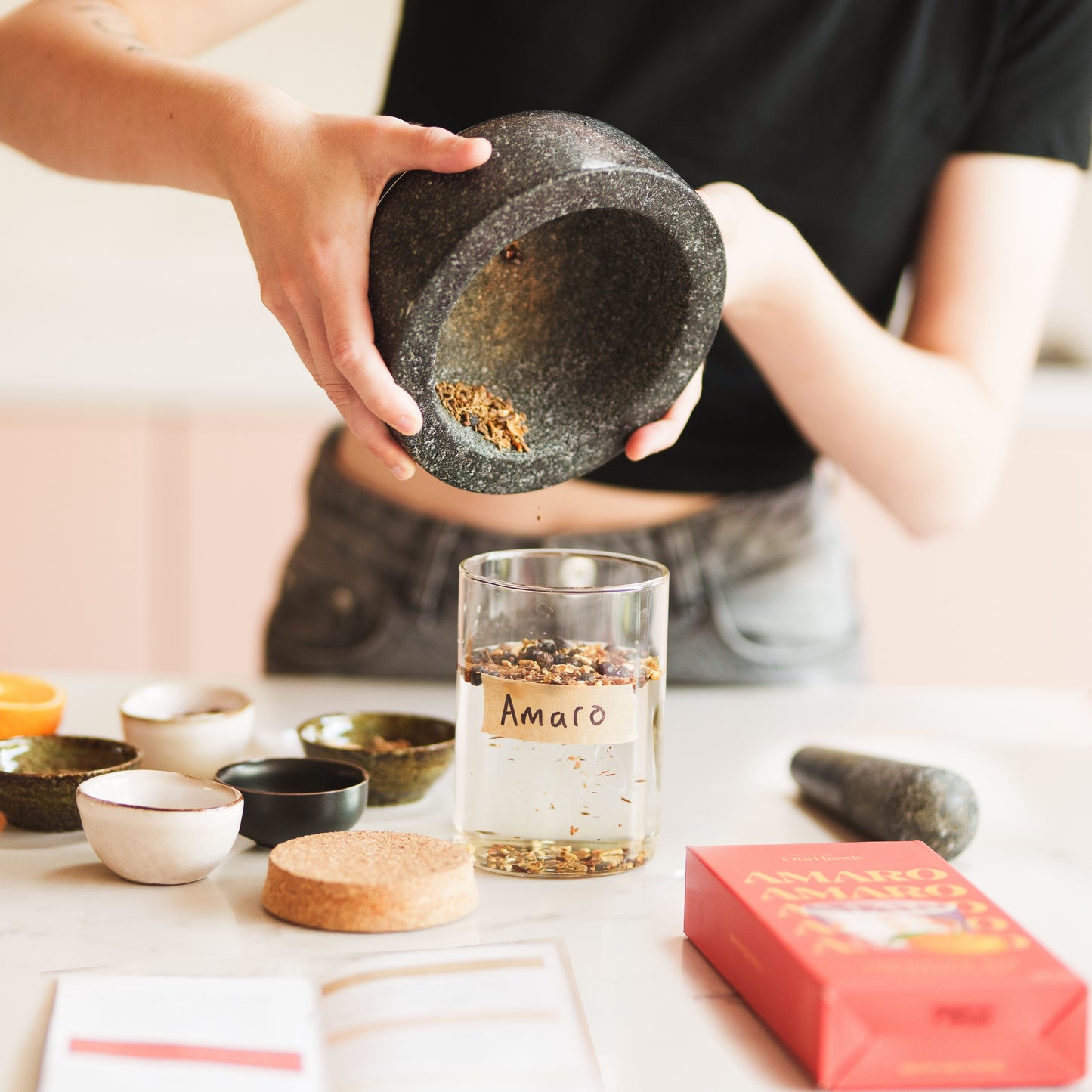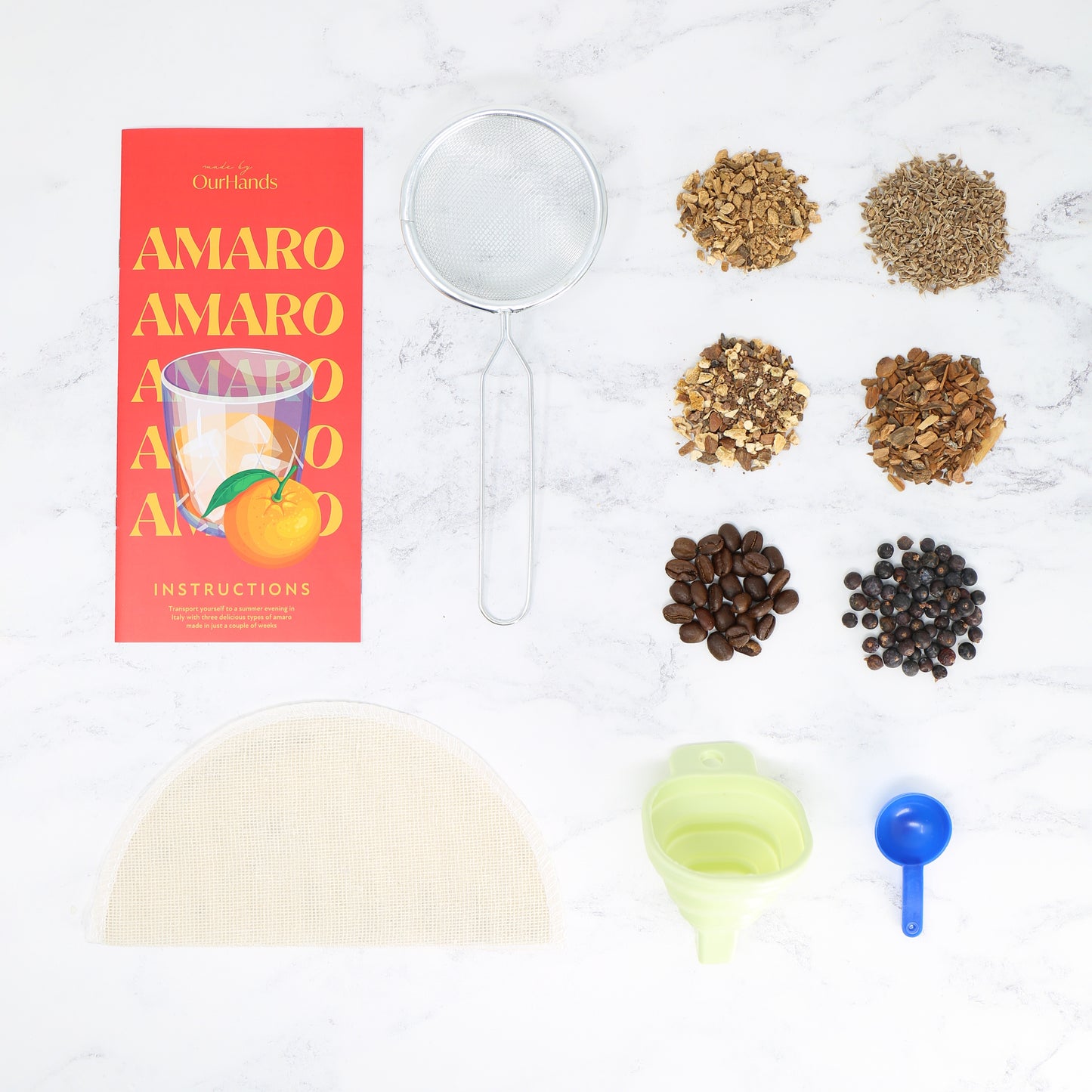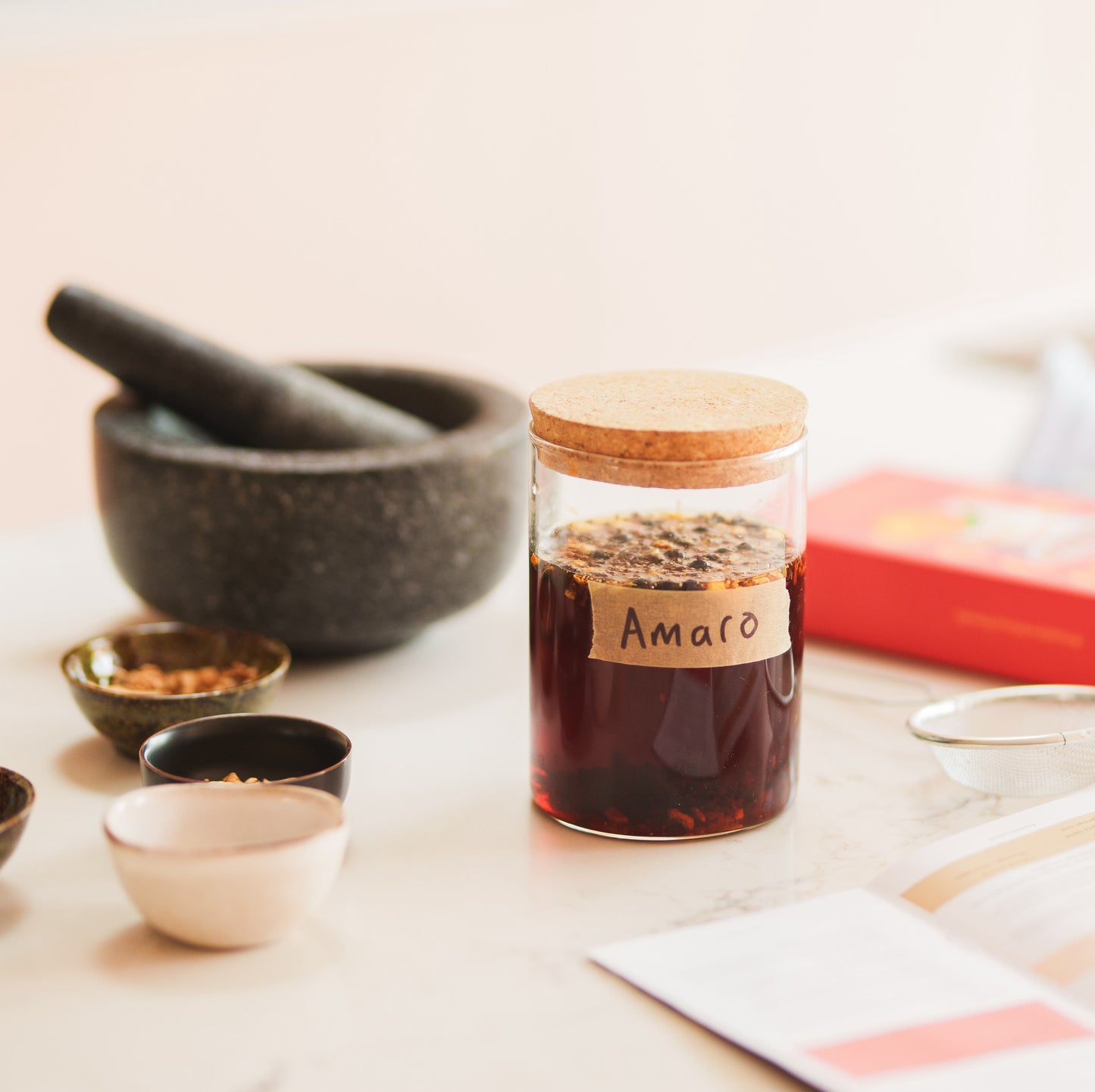What is amaro? A guide to your new favourite Italian liqueur
Picture this: it is finally spring. As the days get longer and the temperature starts increasing, you meet your friends at a bar. There, surrounded by the bright colours of flowers and the lively chatter of the city, you get the perfect spring drink: an Aperol Spritz. The late afternoon sun warms your skin as you laugh along with your friends and sip your deliciously bittersweet drink. There is no better way to celebrate the end of winter!
The Aperol Spritz is one of the most popular cocktails for the sunny months of the year, but do you know how it’s made? ‘Aperol’ is a type of amaro, a delightful Italian liqueur that has been handmade in Italian homes for centuries. In this article, we’ll go over the history of amaro, how it is made, and how to drink it. Cheers!
What is amaro?
Amaro, which aptly translates to “bitter”, is a traditional Italian liqueur that is famous for its bittersweet taste and its rich tapestry of herbs and botanicals. Like many modern drinks, it was originally created as a ‘health tonic” before evolving into the beverage we know today. Nowadays, it is mainly used as a digestive after a nice meal or as an ingredient in cocktails, in which it is used to highlight lighter, sweeter flavours, much in the same way as bitters would.
Though most amari (the plural of amaro) share common ingredients like wormwood, gentian root and citrus peel, there is no ‘official’ recipe for it. Many famous brands of amaro like Montenegro, Campari, or even Aperol, have their own recipes that highlight different aspects of the drink.

History of Amaro
Infusing herbs into alcohol is nothing new. Amaro finds its origins all the way back to Ancient Rome, almost two thousand years ago! Back then, herbs and fruit were infused into wine to increase their medicinal properties (or so they believed!). At the time, water wasn’t always safe to drink, so alcohol was a good way to ‘purify’ beverages and extract health benefits from plants. Not only was this the start of many of the liqueurs we drink today, but it was also the start of medicine! This bitter fortified wine was very popular for many centuries, and can even be linked to modern-day beverages such as vermouth or sherry.
In the Middle Ages, monasteries and pharmacies took amaro to the next stage of its existence by replacing the wine used as a base with strong spirits. By removing the taste of wine from the equation and infusing the botanicals in stronger alcohol, they were able to strengthen the taste of the ingredients, namely the bitter roots that give amaro its characteristic bittersweet taste. This ‘health tonic’ would be used to treat ailments such as upset stomachs, colds, and fevers.
By the 19th century, a lot of Italian households would make their own amaro from common ingredients they could find close to their homes. It would be used as a digestive after meals, as it was believed that the strong bitterness would help with digestion.
Nowadays, amaro can still be drunk neat as a digestive, or it can be used as a cocktail ingredient. Like bitters, its bittersweet taste is fantastic at underlining different flavours.

How is amaro made?
Amaro can be produced commercially, or it can be homemade. Though the ingredients and techniques are similar, commercially produced amaro goes through more complicated processes of maceration and distillation before it hits our shelves. As we’re always advocating for doing things ourselves whenever possible, this article will mainly be focusing on homemade amaro.
Though making amaro is not very difficult, it can require quite a lot of patience and experimentation before you can make something you like. As we’ve mentioned, there is no ‘official’ recipe for amaro, so you’ll need good knowledge of ingredients and botanicals in order to mix and match them properly. Not to worry though! There are still some guidelines you can follow that will make infusing your amaro a lot easier (and tastier!). If you want to get started with no stress, you can find amaro-infusing kits and recipes online.
The first step to making your own amaro is also the most difficult: choosing your ingredients. While this may seem like a daunting task, amaro ingredients can actually be divided into roughly three categories: bitter ingredients, citrus and botanicals. As long as all three categories are present, you’re on the right path! A wide range of flavours can be found in each of these categories, so don’t be afraid to experiment. For example, lemon and orange are both in the citrus category, but one will give your amaro a sharp tartness while the other will be sweeter and more mellow.
Once you’ve picked your ingredients, you can crush them lightly with a mortar and pestle to release all their potential. Then, transfer the ingredients into a jar with a strong alcohol such as vodka or bourbon and leave them to infuse for two weeks before straining them. Finally, add a little bit of sweetener to your amaro to undercut its bitterness and extend its shelf life.
And there you have it! A delicious bottle of traditional, homemade amaro. It does take a bit of trial and error, but making your own amaro is so easy and tasty that it’ll hardly feel like work.

How to drink amaro?
Now that we know what amaro is and how to make it, time for the most important question: how do we drink it?
One of amaro’s biggest strengths is its versatility. Because amaro can be made in many different ways with many different ingredients, you can tweak your recipe to get the exact flavour profile you want for what you’d like to make. This means amaro will be as delicious used as a cocktail ingredient as it will be drunk neat.
If you would like to enjoy your amaro in the traditional way, you can have it neat or with some ice cubes at the end of a meal. There, its complicated flavours can take their time to develop in interesting and pleasant ways, highlighting its signature bittersweetness. La dolce vita in a glass!
If you’d like a more modern way of enjoying your amaro, try it in cocktails! The depth and complexity of amaro make it ideal for experimentation and will take your cocktails in new, unexpected directions every time. Whether you like classic or contemporary cocktails, whether you enjoy them spiced or herbal, sweet or powerful, you will find the perfect amaro companion.

A toast to amaro
Amaro is one powerful little drink. From its beginnings as a health tonic, it has become a staple of Italian culture across the world. With its delicious bittersweetness, it is easy to make and even easier to use, whether you drink it neat or in a cocktail.
We hope you’ve enjoyed this trip through the world of amaro, and that you’ll give it a try next time you’re at the bar!









